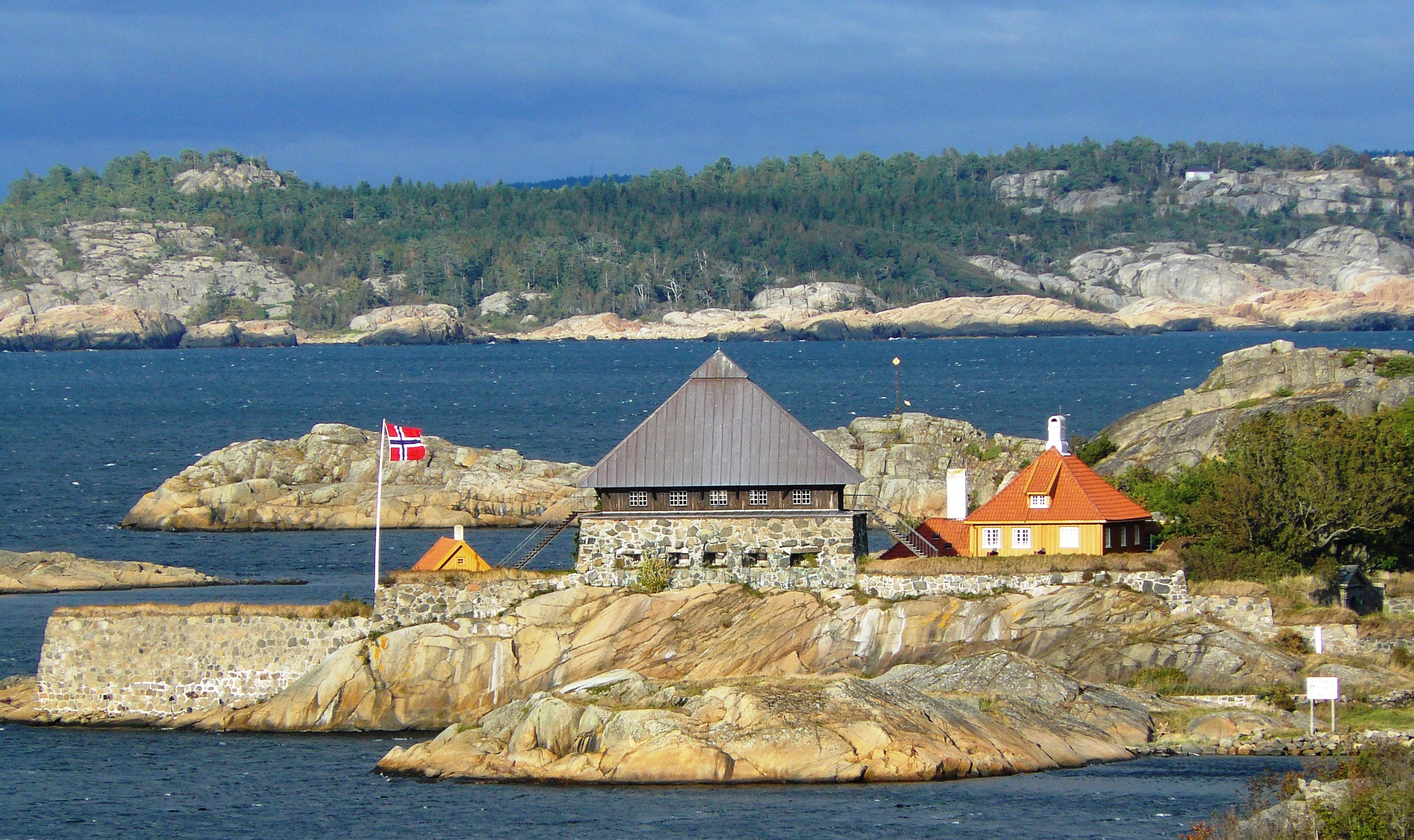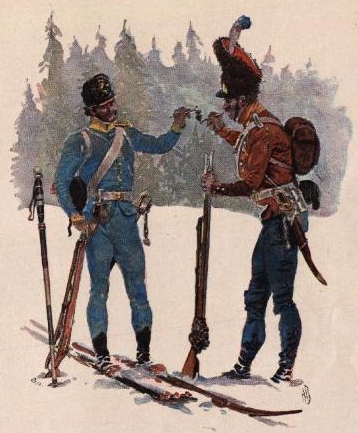|
Jonas Budde
Jonas Budde or Jonas Olufsen Bude, (23 January 1644 – 1710) served a distinguished career in the Norwegian Army, including service at various Norwegian fortresses during the extended period of hostility between Sweden and Denmark-Norway. He served as an officer of Fredrikstad Fortress garrison from 1676 through 1681 (including the period of the Gyldenløve War), was the commanding officer of Christiansfjeld fortress from October 24, 1684, to February 2, 1688, and was lieutenant colonel (''Oberstløjtnant'') and commanding officer of Stavern Fortress from November 3, 1689, until his death in 1710 at sixty six years of age. Family Jonas Budde was married in 1670 in Fredericia Fredericia () is a town located in Fredericia Municipality in the southeastern part of the Jutland peninsula in Denmark. The city is part of the Triangle Region, which includes the neighbouring cities of Kolding and Vejle. It was founded in 16 ..., Denmark with Alhed Wiborg, born 29 September 16 ... [...More Info...] [...Related Items...] OR: [Wikipedia] [Google] [Baidu] |
Christiansfjell Fortress
Christiansfjeld Fortress is a historic fort located in the town of Elverum which is located in Elverum Municipality in Innlandet county, Norway. History The fortress was built on a hill on the east side of the river Glomma as one of several military facilities in the vicinity. The fortress was initially established by Danish officer Gustav Wilhelm Wedel Jarlsberg (1641-1717), Count of Wedel-Jarlsberg in 1683. A tower with a cellar powder magazine was among the first buildings at this Norwegian fortress. Originally known as ''Hammersberg Skanse'', during King Christian V's 1685 visit to Norway he toured the fortification. Recognizing its strategically important location on the Swedish border, he renamed the fortress Christiansfjeld and directed continued improvements. An extensive report of the visit includes illustrations of the fortress at that time. After the Great Northern War some of the smaller border forts were determined to be more expensive than their utility justifie ... [...More Info...] [...Related Items...] OR: [Wikipedia] [Google] [Baidu] |
Staverns Fortress
Staverns Fortress was a military facility located on the island of Citadelløya at Stavern in Vestfold, Norway. History The construction of Staverns Fort began in 1677 when Ulrik Frederick Gyldenløve built a blockhouse with battery and palisades on a hill as part of the overall development of Norwegian fortresses. The fort was first built on Karlsøy during the Gyldenløve War (1675–1679). Fredriksvern and Fredriksvern Verft was established as the headquarters for the Norwegian Fleet from 1750 until 1758 so that the older fortification became part of the naval base and called the Citadellet and the island Citadelløya. The fortress was expanded in 1687 until 1689 to include three canon batteries and a blockhouse. The fortress served as an important base for Norwegian naval hero Tordenskiold and his fleet during the Great Northern War’s final Norwegian phase from 1709 until 1720 and as a central staging point for sea commerce from Denmark in this period. The fort was ... [...More Info...] [...Related Items...] OR: [Wikipedia] [Google] [Baidu] |
Jonas Budde
Jonas Budde or Jonas Olufsen Bude, (23 January 1644 – 1710) served a distinguished career in the Norwegian Army, including service at various Norwegian fortresses during the extended period of hostility between Sweden and Denmark-Norway. He served as an officer of Fredrikstad Fortress garrison from 1676 through 1681 (including the period of the Gyldenløve War), was the commanding officer of Christiansfjeld fortress from October 24, 1684, to February 2, 1688, and was lieutenant colonel (''Oberstløjtnant'') and commanding officer of Stavern Fortress from November 3, 1689, until his death in 1710 at sixty six years of age. Family Jonas Budde was married in 1670 in Fredericia Fredericia () is a town located in Fredericia Municipality in the southeastern part of the Jutland peninsula in Denmark. The city is part of the Triangle Region, which includes the neighbouring cities of Kolding and Vejle. It was founded in 16 ..., Denmark with Alhed Wiborg, born 29 September 16 ... [...More Info...] [...Related Items...] OR: [Wikipedia] [Google] [Baidu] |
Norwegian Army
The Norwegian Army ( no, Hæren) is the land warfare service branch of the Norwegian Armed Forces. The Army is the oldest of the Norwegian service branches, established as a modern military organization under the command of the King of Norway in 1628. The Army participated in various continental wars during the 17th, 18th, and 19th centuries as well, both in Norway and abroad, especially in World War II (1939–1945). It constitutes part of the Norwegian military contribution as a charter member of the North Atlantic Treaty Organization (NATO) since 1949. History Creation of the Norwegian Army After the Kalmar War broke out in 1611, the Danish-Norwegian king, Christian IV tried to revive the leidang, with dire results. As the Norwegian peasantry had not been armed or trained in the use of arms for nearly three centuries, they were not able to fight. Soldiers deserted or were captured. The soldiers had to participate in military drills, while providing supplementary labor to ... [...More Info...] [...Related Items...] OR: [Wikipedia] [Google] [Baidu] |
Norwegian Fortresses
Norwegian fortresses or fortifications have been constructed from some of the earliest recorded periods, down through the 20th century. The geography and topography of glacially carved, mountainous Norway constrain both the sea and the land routes which an aggressor must follow. Natural strong-points, such as rock outcroppings at Halden, Tønsberg and Trondheim make excellent bases for fortification (i.e., natural fortresses). Fortifications evolved to accommodate the offensive threat which they guard against. Early castles provided a strong defense against the attack of the day, and were normally taken by duplicity or siege. In the age of black powder, cannon allowed breaching of the fortress walls and subsequent taking by storm. As a result, fortresses changed form, now incorporating design features like the bastion, ravelin, and glacis to allow cannon within the fortress to be effective while protecting the walls and defenders from external attack. This evolution of technolog ... [...More Info...] [...Related Items...] OR: [Wikipedia] [Google] [Baidu] |
Fredrikstad Fortress
Fredrikstad fortress (''Fredrikstad festning'') was a fortification in Fredrikstad, Norway. It was the base of the Østfold Regiment, with defence related responsibilities for the east side of Oslofjord. History Fredrikstad Fortress was constructed between 1663 and 1666 by the officer Willem Coucheron and his son Anthony Coucheron following the order of the Dano-Norwegian King Frederick II. A temporary fortification had previously been built on the site during the Torstenson War (1644–1645) between Sweden and Denmark–Norway. The first commander was appointed 6 January 1662; he was Lieutenant Colonel Johan Eberhard Speckhan, succeeded by Johan von Fircks in 1663. Besides the fortress the prison works was also under the supervision of the commander of Fredrikstad fortress. In 1716 the fortress was used by the naval hero Peter Tordenskjold when he attacked the Swedish fleet during the Battle of Dynekilen The naval Battle of Dynekilen () took place on 8 July 1716 during th ... [...More Info...] [...Related Items...] OR: [Wikipedia] [Google] [Baidu] |
Gyldenløve War
The Scanian War ( da, Skånske Krig, , sv, Skånska kriget, german: Schonischer Krieg) was a part of the Northern Wars involving the union of Denmark–Norway, Brandenburg and Sweden. It was fought from 1675 to 1679 mainly on Scanian soil, in the former Danish and Norway provinces along the border with Sweden, and in Northern Germany. While the latter battles are regarded as a theater of the Scanian war in English, Danish, Norwegian and Swedish historiography, they are seen as a separate war in German historiography, called the Swedish-Brandenburgian War (german: link=no, Schwedisch-Brandenburgischer Krieg). The war was prompted by Swedish involvement in the Franco-Dutch War. Sweden had allied with France against several European countries. The United Provinces, under attack by France, sought support from Denmark–Norway. After some hesitation, King Christian V started the invasion of Skåneland (Scania, Halland, Blekinge, and sometimes also Bornholm) in 1675, while th ... [...More Info...] [...Related Items...] OR: [Wikipedia] [Google] [Baidu] |
Fredericia
Fredericia () is a town located in Fredericia Municipality in the southeastern part of the Jutland peninsula in Denmark. The city is part of the Triangle Region, which includes the neighbouring cities of Kolding and Vejle. It was founded in 1650 by Frederick III, after whom it was named. The city itself has a population of 40,886 (1 January 2022)BY3: Population 1. January by urban areas, area and population density The Mobile Statbank from Statistics Denmark and the Fredericia Municipality has a population of 50,324 (2014). History [...More Info...] [...Related Items...] OR: [Wikipedia] [Google] [Baidu] |
Malmö
Malmö (, ; da, Malmø ) is the largest city in the Swedish county (län) of Scania (Skåne). It is the third-largest city in Sweden, after Stockholm and Gothenburg, and the sixth-largest city in the Nordic region, with a municipal population of 350,647 in 2021. The Malmö Metropolitan Region is home to over 700,000 people, and the Øresund Region, which includes Malmö and Copenhagen, is home to 4 million people. Malmö was one of the earliest and most industrialised towns in Scandinavia, but it struggled to adapt to post-industrialism. Since the 2000 completion of the Öresund Bridge, Malmö has undergone a major transformation, producing new architectural developments, supporting new biotech and IT companies, and attracting students through Malmö University and other higher education facilities. Over time, Malmö's demographics have changed and by the turn of the 2020s almost half the municipal population had a foreign background. The city contains many histori ... [...More Info...] [...Related Items...] OR: [Wikipedia] [Google] [Baidu] |
Fredriksværn
Fredriksvern (also called ''Friderichsværn'' (1801), ''Frederiksværn'' (1865), ''Fredriksværen'' (1900) and abbreviated ''Frsværn'') was an important Norwegian naval base, just south of Larvik in Vestfold. It is named after Fredrik V Denmark-Norway. The town of Stavern has in many ways come to be because of this naval base. History The military activities in the harbor of Stavern began with building of Staverns Fortress, part of a major construction of Norwegian Fortresses which took place from 1675 to 1679 under Christian IV. Stavern has probably been a harbor since ancient times. The name is found in written sources the 11th century and in the 12th century it is referred to as a good fishing harbor. Citadellet Fortress was built in the 1680s by count Ulrik Frederik Gyldenløve and had an important role during the last Nordic war from 1709 to 1720. During the winter of 1748 - 1749 King Fredrik V ordered construction of a shipyard and a drydock in Norway and in 1750 the fi ... [...More Info...] [...Related Items...] OR: [Wikipedia] [Google] [Baidu] |
1644 Births
It is one of eight years (CE) to contain each Roman numeral once (1000(M)+500(D)+100(C)+(-10(X)+50(L))+(-1(I)+5(V)) = 1644). Events January–March * January 22 – The Royalist Oxford Parliament is first assembled by King Charles I of England. * January 26 – First English Civil War – Battle of Nantwich: The Parliamentarians defeat the Royalists, allowing them to end the 6-week Siege of Nantwich in Cheshire, England. * January 30 – **Dutch explorer Abel Tasman departs from Batavia in the Dutch East Indies (now Jakarta in Indonesia) on his second major expedition for the Dutch East India Company, to maps the north coast of Australia. Tasman commands three ships, ''Limmen'', ''Zeemeeuw'' and ''Braek'', and returns to Batavia on August 4 with no major finds. ** Battle of Ochmatów: Polish–Lithuanian Commonwealth forces under hetman Stanisław Koniecpolski secure a substantial victory over the horde of Crimean Tatars, under Tugay B ... [...More Info...] [...Related Items...] OR: [Wikipedia] [Google] [Baidu] |







